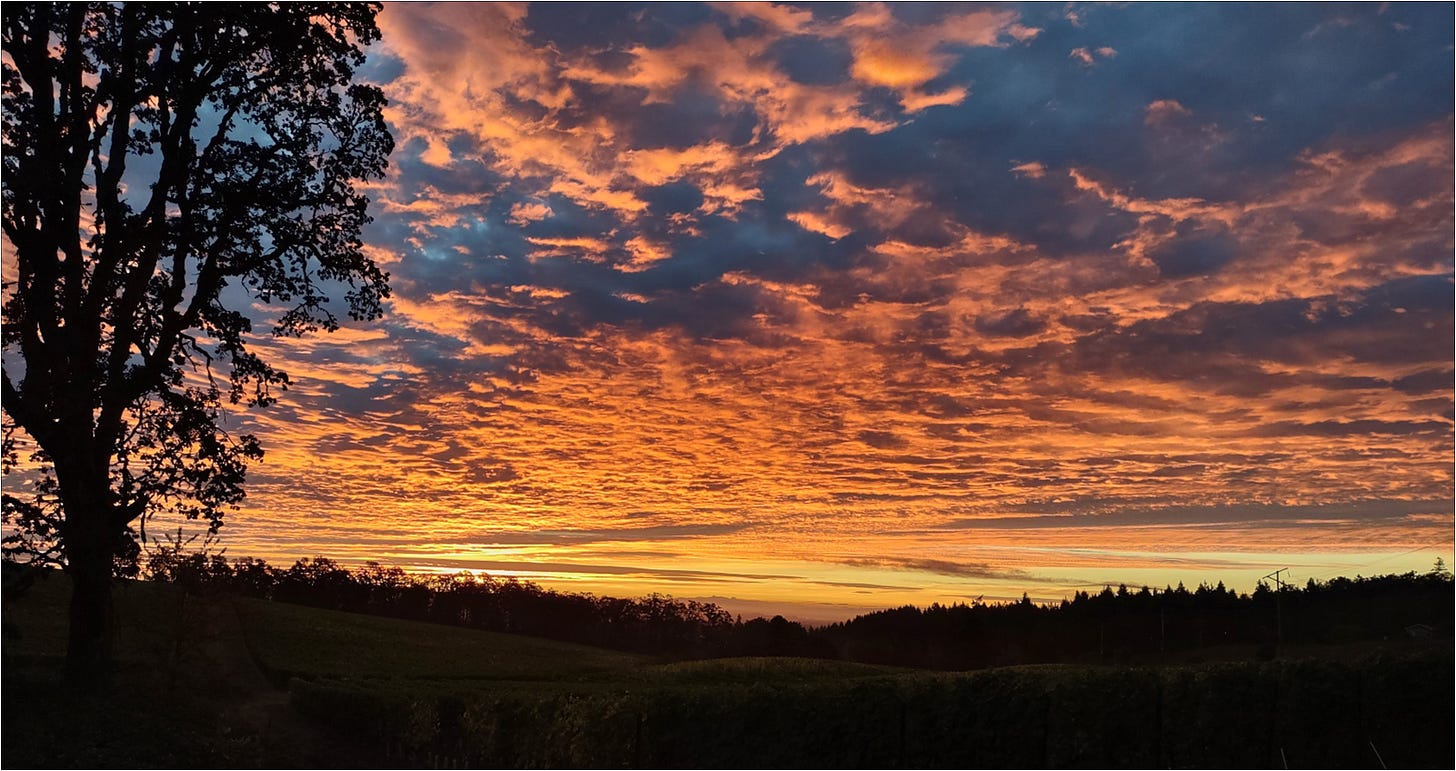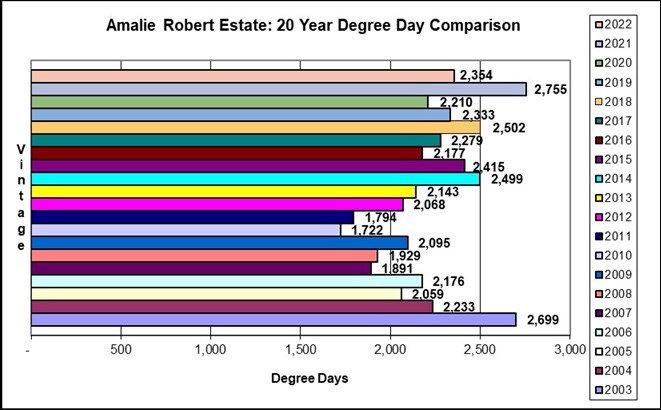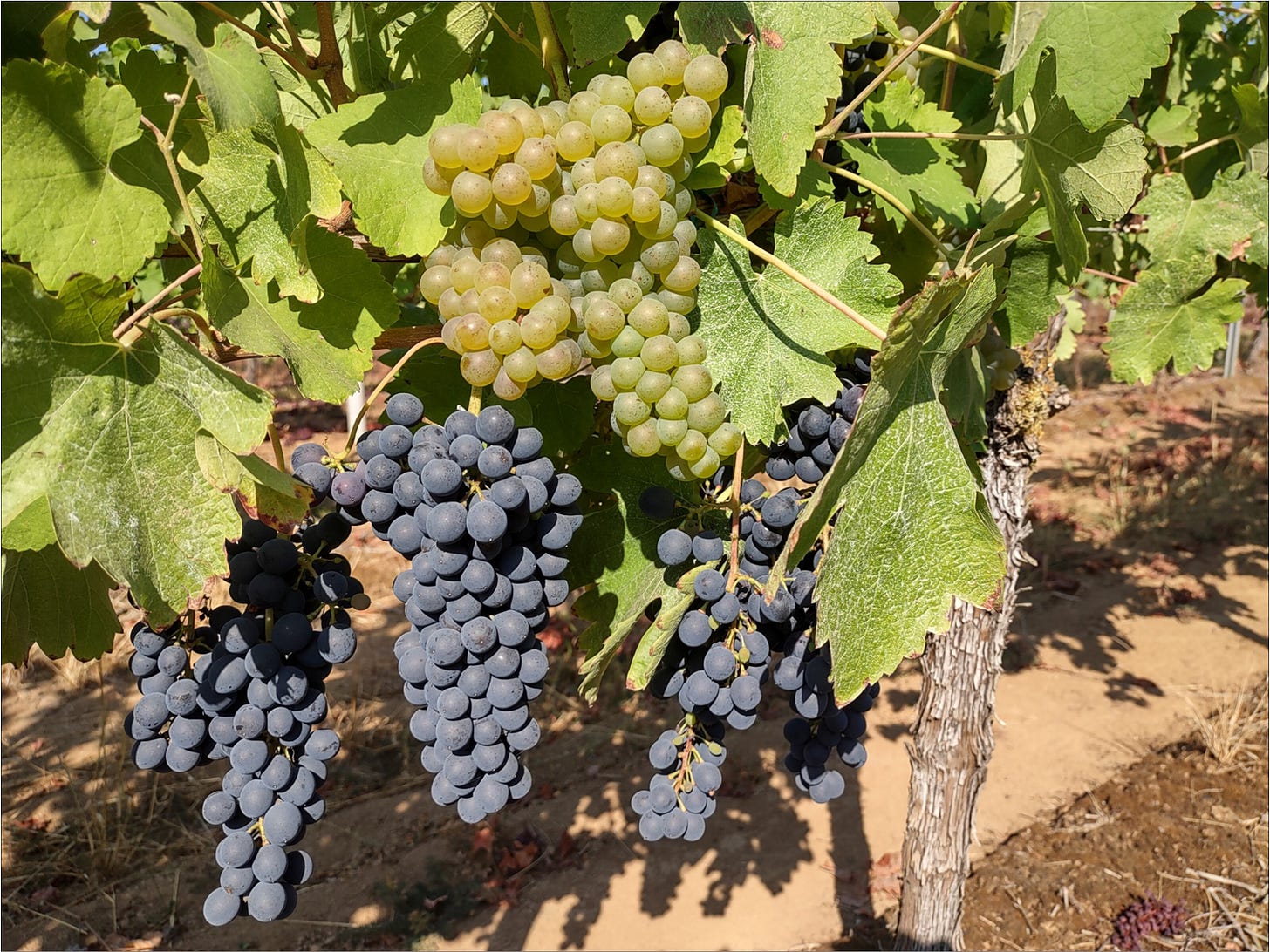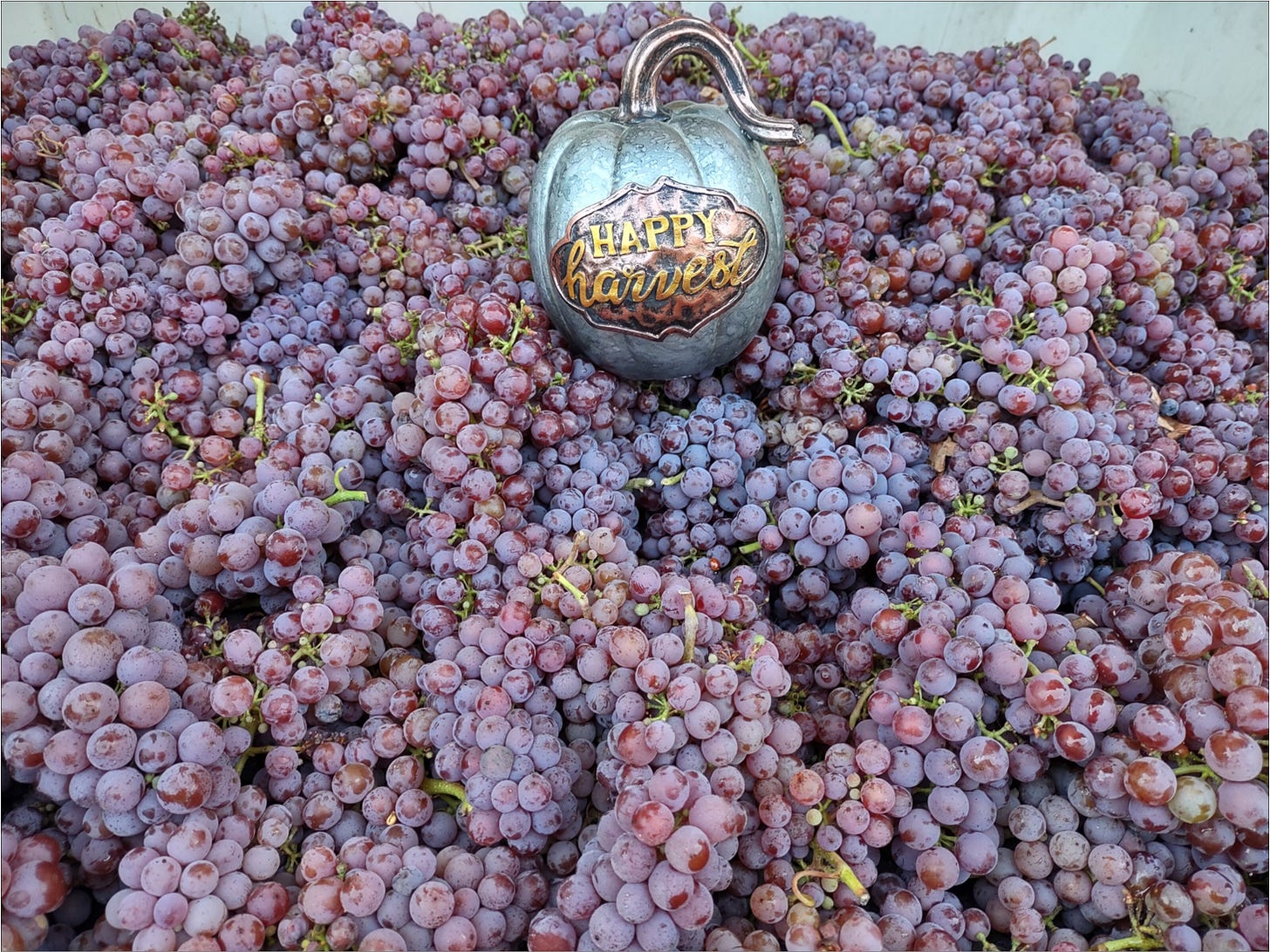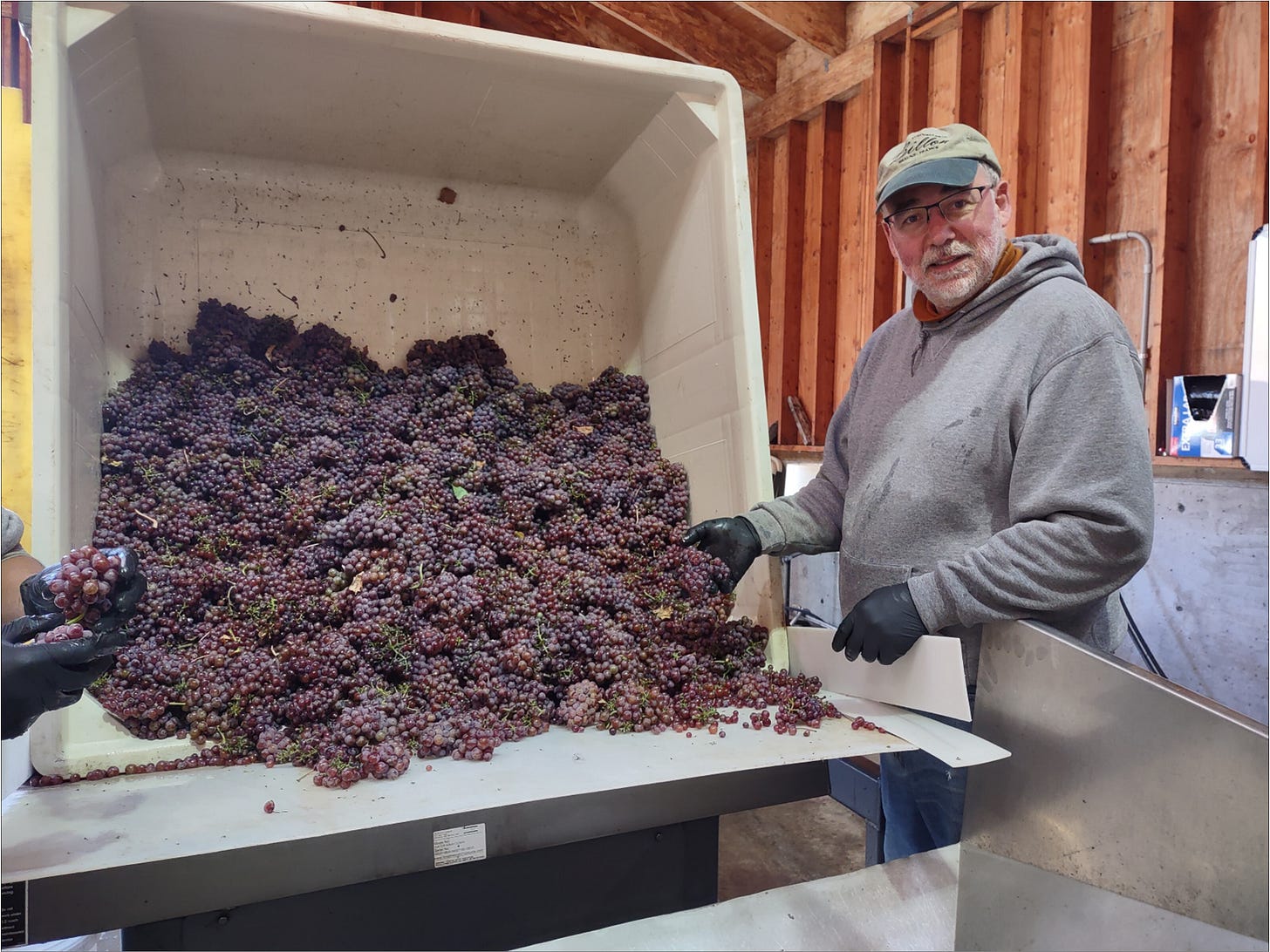Amalie Robert Estate Vintage Update: 2022 Harvest After Action Report (HAAR)
Hello and Welcome,
This is the Amalie Robert Estate Vintage 2022 Harvest After Action Report (HAAR). Willamette Valley Pinot Noir has a definitive schedule. Once the vines flower, they need about 105 days, more or less, to produce wine berries with sufficient aroma and flavor to make commercially viable wine. This has been the case since long ago when David Lett, Dick Erath and Dick Ponzi began growing Pinot Noir in the Willamette Valley.
Mother Nature has her program as well, albeit with some variation from year to year. Typically, it is cool and rainy in the spring, followed by increased sunshine hours and a warning trend known as summer, and then showers and cool weather signal the arrival of fall, and start of The Great Cluster Pluck.
From time to time these two continuums can become disassociated. And that is the story behind Vintage 2022.
When two worlds collide.
Mother Nature starts the growing season by providing the vines enough heat units to produce flowers. She also controls the yield with the weather pattern during flowering. Cold and rainy means fewer flowers are pollinated, while warm and dry means better pollination and more yield. Then the vines are on their own to execute their pre-programmed growing cycle. And we try and keep up with canopy management and hedging. It is not complicated, but it does require planning and significant labor hours.
Well, for some reason or another, we experienced a late frost event. It occurred when the vines were in the process of budding out their very first signs of life and exposing their green tissue to the elements. You knew you were a victim of this event when those little green shoots turned brown. They were dead.
Much like a cat that knocks an expensive vase to the floor, Mother Nature carried on as if nothing had happened. But the vines, they were left to pick up the pieces. Their primary goal is to ripen seeds to reproduce. Without shoots and flowers, there are no wine berries, and hence no seeds to ripen.
So the vines did what vines do in this circumstance, they sent out secondary shoots. These shoots are always there in case of such events – vines are survivors. However, if the primary shoot emerges unscathed, the secondary shoots are suppressed and remain dormant inside the bud.
Two vintages on the same vine (you can learn a lot from Gewürztraminer).
At Amalie Robert Estate, the Gewürztraminer took it hard. Well over half of the shoots were frosted out. As was foretold above, the vines' response was to push the secondary shoots. But this takes time, about two weeks’ worth. Meanwhile, the vine continues to grow and produce leaves, shoots, tendrils and inflorescence that will bear fruit.
As the spring was cooler than average, it took more calendar days for the vines to produce flowers. But when they did arrive at that juncture, we were well on our way to the warming days of summer. And much like the late flowering vintages of 2010 and 2011, pollination was very successful. We set TONS of fruit on the primary shoots.
The secondary shoots were also exposed to these same growing conditions. And when they flowered a couple of weeks later, they also had excellent weather for pollination. But that meant they were going to need another couple of weeks to finish ripening. Based on such a late flowering date, it was time we were not likely to find. The vine continuum and the weather continuum had diverged. Ernie let the 150 Gewürztraminer vines run their course as a vintage experiment.
Fortunately for us, the Pinot Noir was not nearly as affected as the Gewürztraminer. Pinot Noir is on a slightly different schedule. We also planted several clones on different rootstocks over a larger acreage thus spreading the risk. As part of our standard viticultural program, we specifically remove the secondary shoots from the vines when they push out. We saw very little secondary shoot activity with Pinot Noir, but there was some. Did you know, the Irish Lumper is being re-introduced into Ireland after 170 years?
Fire on the mountain!
As the warm summer months began to nudge the vines toward ripening, the third major influence of Vintage 2022 reared its ugly head – wildfires. There is nothing like a wildfire to provide focus and attention to detail. Lightning is often the culprit from summer thunderstorms, however humans can be held to account for several of these environmental disasters. From Seattle down to Portland and into southern Oregon, wildfires blazed.
Smoke tainted wine berries are the concern. But it is not always absolute. Not like being pregnant, either you are or you are not. As the Jetstream blows smoke in and then clears it out, the wine berries are at risk. The attributes of the smoke event make a difference, such as how close you are to the source and how long the exposure event occurs. As with many things associated with being a winegrower, once you plant your vineyard, it is better to be lucky than good.
So we tested our fruit as we were cluster plucking. If the wine berries were compromised, there was no sense in continuing to harvest. The last blocks to come in were Chardonnay and our block of Syrah and Viognier. And as luck would have it, our Chardonnay juice came back with NO detectable smoke taint. But we are not in the clear just yet. Chardonnay had very little skin contact while we were pressing the juice. Pinot Noir and Syrah ferment on the skins for about a month. We will be testing those lots before we go to barrel.
Other than that Mrs. Lincoln, how did you enjoy the play...
Willamette Valley Vintage 2022 offered one of the best Pinot Noir ripening windows we have seen in quite some time. And we have been here since the turn of the century! August and September were moderately warm and dry and we continued that run into October. We banked plenty of soil moisture in the spring, about 13 inches worth. From a human point of view, it was lovely fall weather, and we had plenty of opportunity to enjoy it. And if you just happened to be a Pinot Noir wine berry on the vine, well there was nothing finer.
The month of September contributed 451 Fahrenheit Degree Days to 1,683 growing season to date August number for a total 2,134 Degree Days. The high temperature was 95.7 recorded at 4:12 pm on September 1st. The low temperature was 40.5 recorded the morning of September 8th from 6:30 to 7:00 am. Rain was a scant 0.39 inches.
We accumulated 220 Degree Days for the month of October, providing a total 2,354 Degree Days for Vintage 2022. Not so farming bad for what started off as a cold shoulder from Mother Nature. The high temperature was 92.3 degrees recorded on October 2nd at 3 pm, and a chilly 35.8 degree low temperature was recorded on October 28th at 8:12 am. Rain began to fall on October 22nd and continued through the end of the month providing a total of 1.56 inches.
While we harvested Syrah and Viognier on November 3rd, there were no Degree Days for November. In fact it was a very clear and cold 32 degrees as those 4 clones of Syrah were plucked from their vines. That made for a very cold start to fermentation. We received another 1.03 inches of rain before the Syrah harvest which helped provide Botrytis inoculum for the Chardonnay.
The Great Cluster Pluck Vintage 2022 began in earnest, as it always does, on October 9th with the early ripening variety Gewürztraminer. Gewürztraminer is such a happy looking variety. The wine berries are pink when ripe and have a very holiday aura about them. They are just fun to be around.
And here is where we evaluate the results of the secondary shoot experiment. We sort our fruit in the winery, after we sort it in the field at the harvest bin. The rule is simplicity itself – If you are not willing to put it in your mouth, then throw it out.
In the winery as we sorted the Gewürztraminer we would filch a berry or two to insure we are performing our quality control duties adequately. We are also looking for any rot that might have been missed along with any secondary crop that is not quite ripe. Hand harvesting allows for this level of focus and attention to detail. Machine harvesting, not so much.
And yes, we had secondary crop. You could tell by how tight the berries were packed into the cluster. They were not yet soft and would not yield to pressure, The color was not as festive as clusters from the primary shoots. They were also larger than primary shoot clusters. And then came the ultimate test, you took a few berries and tasted them. Whoa! That is 100% green apple acid! The Gewürztraminer fruit from the secondary shoots was not ripe, and there was a lot of it.
A successful failure.
While it was disappointing to return the unripe clusters to the soil, we were comforted in the knowledge that those nutrients would be used to nourish another vintage. And we learned a valuable lesson that served us well during the rest of harvest, Vintage 2022.
As we began bringing in Pinot Noir, everyone working the sorting line (all 4 of us) was keenly aware of what secondary crop would look and taste like. And if you were ever not quite sure, just take a bite and the answer became self-evident in short order.
Due to a cool spring, we were later than average in starting The Great Cluster Pluck. While we can only follow the aroma and flavor development, come mid-October Mother Nature typically has some precipitation she is ready to share with you. A little is ok, and quite frankly to be expected in the agrarian endeavor.
So it rained. And that helped to extinguish the regional fires. Once the fires were out, the burned debris continued to smolder. Sometimes you could smell it, sometimes not. But you could see it in the sunrises and degraded light quality during the day. Cool breezes from the Ocean were the cleanest air. Anything cycling form north or south was suspect.
Lightning does strike twice, maybe.
While Vintage 2022 bears close resemblance to those elegant and scintillating Pinot Noirs from 2010 and 2011, it also has something in common with 2013. And that has to do with Chardonnay.
Experience can be a wonderful thing. It can also be what you get when you don’t get what you want. Vintage 2013 brought us Typhoon Pabuk that gifted us 9 inches of rain in 4 days. That began the timer on Botrytis rotting our Chardonnay. Pinot Noir was the priority, so we let the Chardonnay hang. By the time we got to it, well, a significant portion was too far gone. We picked some and left the rest to the ravages of Botrytis.
The remaining weather for vintage 2013 was cool breezes and dry. The Chardonnay continued to desiccate from Botrytis concentrating aroma, flavor and sugar as we watched the wine berries turn from yellow, to honey, to mauve to raisin. With the help of our conspiring winemaker Dick Erath, we turned that lot of Chardonnay into a Trockenbeerenauslese styled Botrytis Chardonnay we named Pabuk’s Gift.
Due to the late start in Vintage 2022, short harvest window and substantial early November rain followed by weeks of dry days and below freezing nighttime temperatures, we once again have the opportunity to make the “once in a lifetime” wine - Botrytis Chardonnay. Ernie vowed never again, but the lure of making a magical wine pulls strongly.
While often disregarded, good judgement is the result of experience plus bad judgement. In other words, when someone says "could" you should be clear that they in fact did NOT mean "should".
Kindest Regards,
Dena & Ernie








